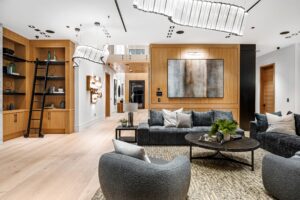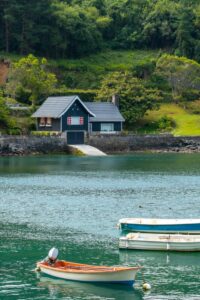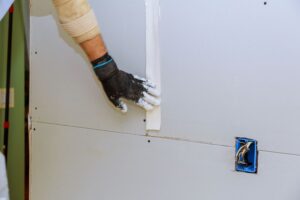When people hear “Level 5 drywall,” they often picture a flawless, museum-smooth wall where every angle looks perfect under a spotlight. The truth is a little more practical — and a lot of what you find online skips over the real-world side of things. At SGP Drywall, we deal with these questions every day, so let’s break it down in plain language.
Level 4 vs. Level 5: What’s the Difference?
Most homes in San Diego are finished at Level 4 drywall. That means three coats of joint compound over seams, corners, angles, and screws. It gets smoothed out, touched up, and checked under normal room light. When painted with a roller and enough coats, it looks clean and professional — and it hides the natural differences between drywall paper and joint compound.
Level 5 drywall, on the other hand, takes it further. A thin skim coat is applied across the entire surface, top to bottom and side to side, to create one consistent texture. That extra step is what makes it look so uniform when spray painted or lit from sharp angles. But it’s important to understand: Level 5 is a surface-finish upgrade, not a cure-all for deeper problems like crooked framing or old corner beads.
Curious how the finishing process differs? Check out our “Drywall Finishing Services” page—it walks you through how we get from bare sheetrock to paint-ready perfection
When Should You Use Level 5?
Level 5 isn’t for every project. It’s ideal when:
- The walls or ceilings will be spray painted (no roller nap to hide imperfections).
- You want a luxury, high-end smooth finish in areas with lots of natural light.
- The goal is to have the surface look the same across every square inch, with no differences in texture between drywall paper and mud.
For most homes, Level 4 is more than enough. It saves money and holds up better in high-traffic areas, where walls are more likely to get dinged. Level 5 is beautiful, but it’s delicate — which is why we usually recommend it for special areas, not every room.
What Level 5 Can (and Can’t) Do on Existing Walls
Here’s where expectations matter. On brand-new drywall, Level 5 works exactly as intended. On existing walls, especially ones that have been textured, things get trickier:
- Skim coating doesn’t automatically make old walls “Level 5.” It can smooth out textures, but it can’t erase framing flaws or crooked corners.
- Angles and long walls sometimes show a wave even after skim coating, because the framing underneath isn’t perfectly square. Correcting that requires more than just finishing — it may involve flex tape, lasers, or even demo and rebuild.
- Dust pores (tiny bubbles) can show up during skim coating. The best time to fix them is after primer, once the dust is fully sealed in and new mud can bond cleanly.
- Color variations are normal. On moisture-resistant boards (blue, green, purple), you may see the paper color faintly through the skim coat. That doesn’t mean the job is bad — it just means the mud was applied thinly, as it should be.
Bottom line: Level 5 can give existing walls a smooth look, but it won’t magically erase everything that came before it.
Again, for a deep dive into how we handle textures and skim finishes, our Drywall Retexturing Services page is a great reference
Price and Process
Level 5 drywall costs more because of the time, labor, and detail it takes. Every surface gets skim coated and then checked carefully under light — not a 20,000 lumen flashlight that shows endless microscopic pores, but realistic lighting that matches how natural light will hit the room.
Sanding is also done with care. While electric sanders can be used, the final pass is always done by hand with fine-grit sandpaper to avoid swirl marks that would show up under paint.
And one more thing: the painter plays a big role. They’re responsible for dusting, priming correctly, and caulking. If they skip steps, even the best Level 5 job won’t look right. That’s why communication between drywallers and painters matters.
So, Is Level 5 Worth It?
If you’re building a custom home or finishing out a space where perfection really matters, Level 5 is a great choice. Just know what it is — and what it isn’t. It’s a surface finish, not a structural fix. It creates an even, consistent texture that looks amazing when painted right. But it’s also fragile and not always practical in high-traffic areas.
For most homeowners, Level 4 drywall is the sweet spot. It delivers a clean, professional finish without the added cost, and it stands up better to daily life.
At SGP Drywall, we believe in being upfront. We don’t oversell Level 5 where it doesn’t make sense, but when it’s the right choice, we deliver it with the kind of craftsmanship that makes your walls shine — literally and figuratively.
✅ Key takeaway: Level 5 drywall is about achieving uniform smoothness, not fixing structural flaws. Choose it for high-end finishes and spray-painted surfaces. For most projects, Level 4 is the practical winner.



